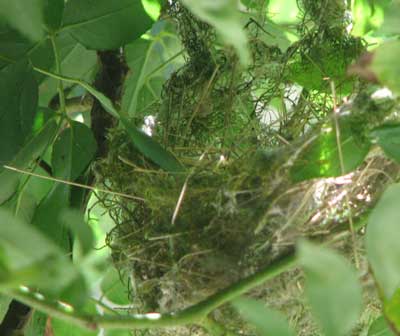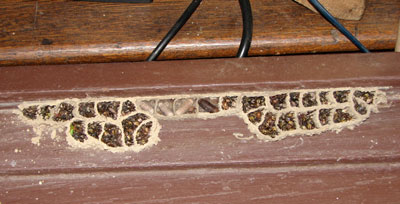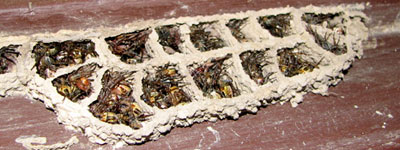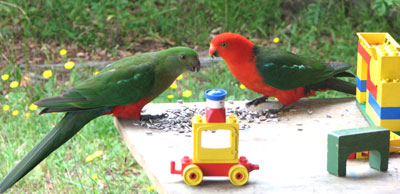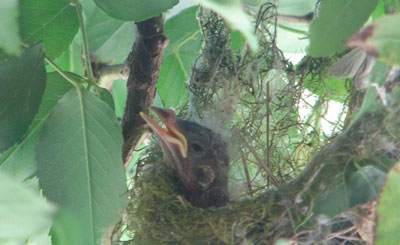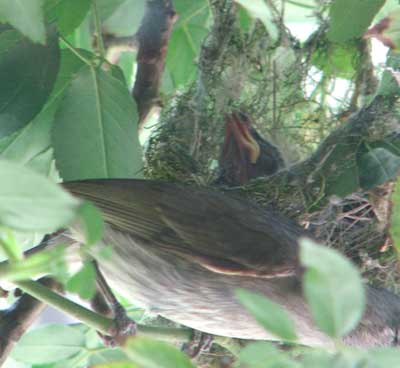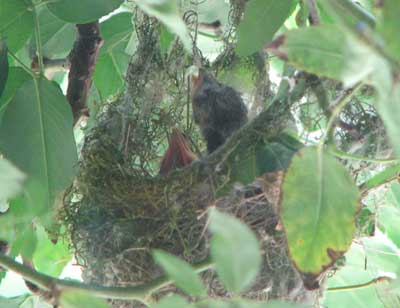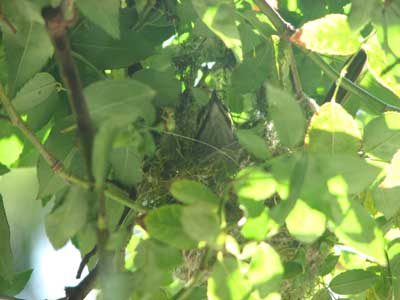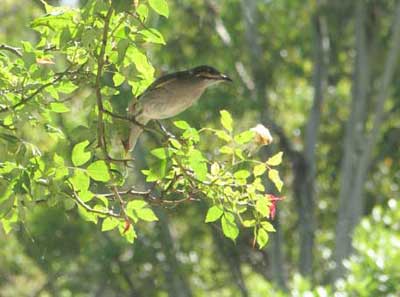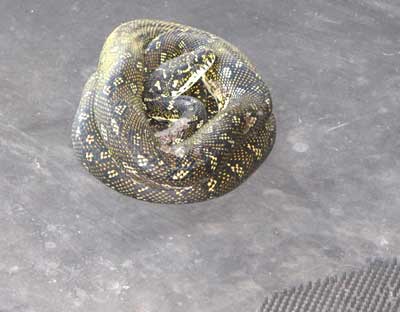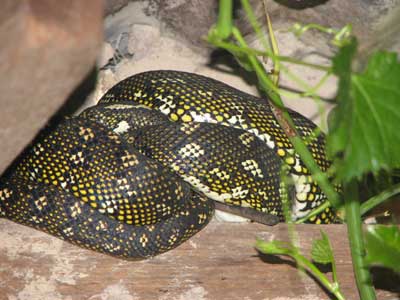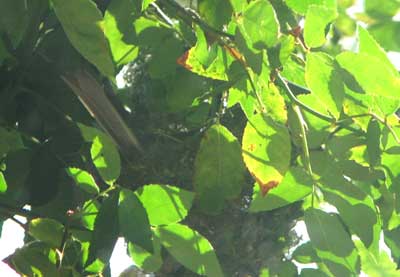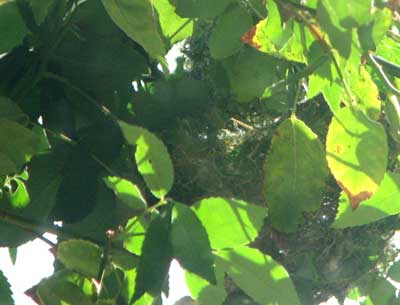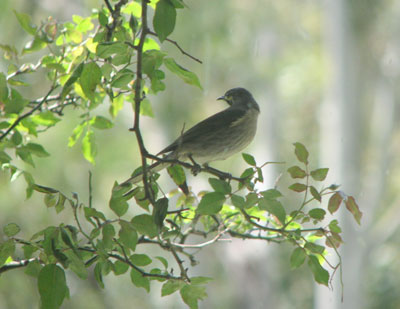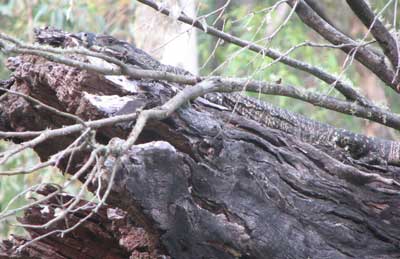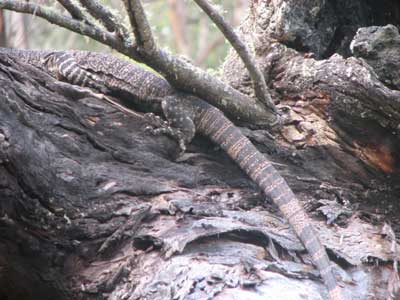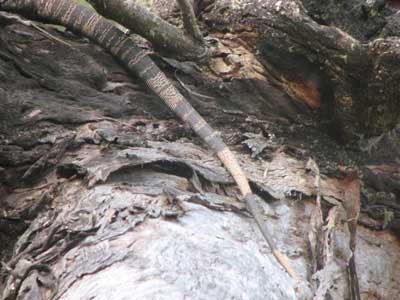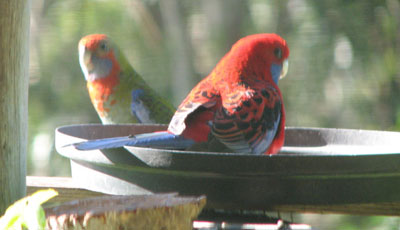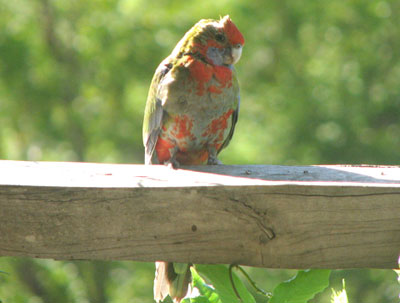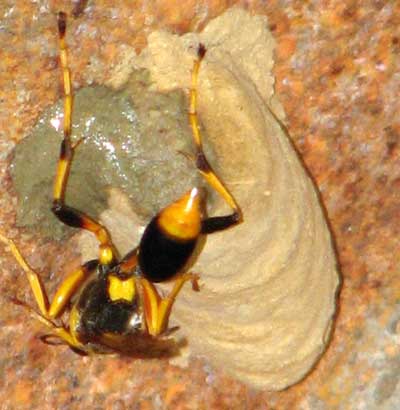
On my verandah I have hung an antique tin tub, so rusty as to be lacework.
Having found it way down in a gully, far from any habitation past or present, I have assumed it was left behind by a cedargetters’ camp, long, long ago.
Now it is providing shelter for an Australian Hornet, who is busily making nests for her young.
She buzzes as she works, the sound being amplified as it vibrates aginst the tin. She bring small amounts of wet mud and shapes them into elongated cups with her delicate feet.
They are like half-coil pots and she is one of the family of ‘potter wasps’.

Inside each clay cell she places paralysed caterpillars, lays an egg, then plugs the top. The young will feed on the caterpillars. Interestingly, the adults only feed on flower nectar.
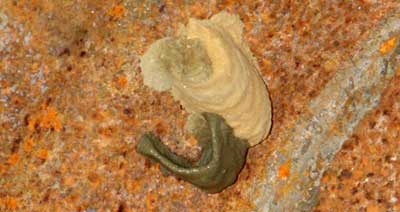
Next to that cell she made another, joined but separate. Look at the neatness of the rows of clay and the flared shaping for adhesion and strength at the ends. She’s an experienced potter.
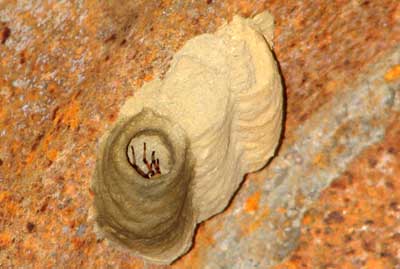
Next morning she had finished two and was inside an almost-completed third, perhaps placing a stunned caterpillar?
These hornets don’t attack people, as I know from them regularly passing by my head as I work when I have the window open here.
So no need to fear or remove them, and they do keep caterpillar numbers in control. Plus they make admirable pots!
